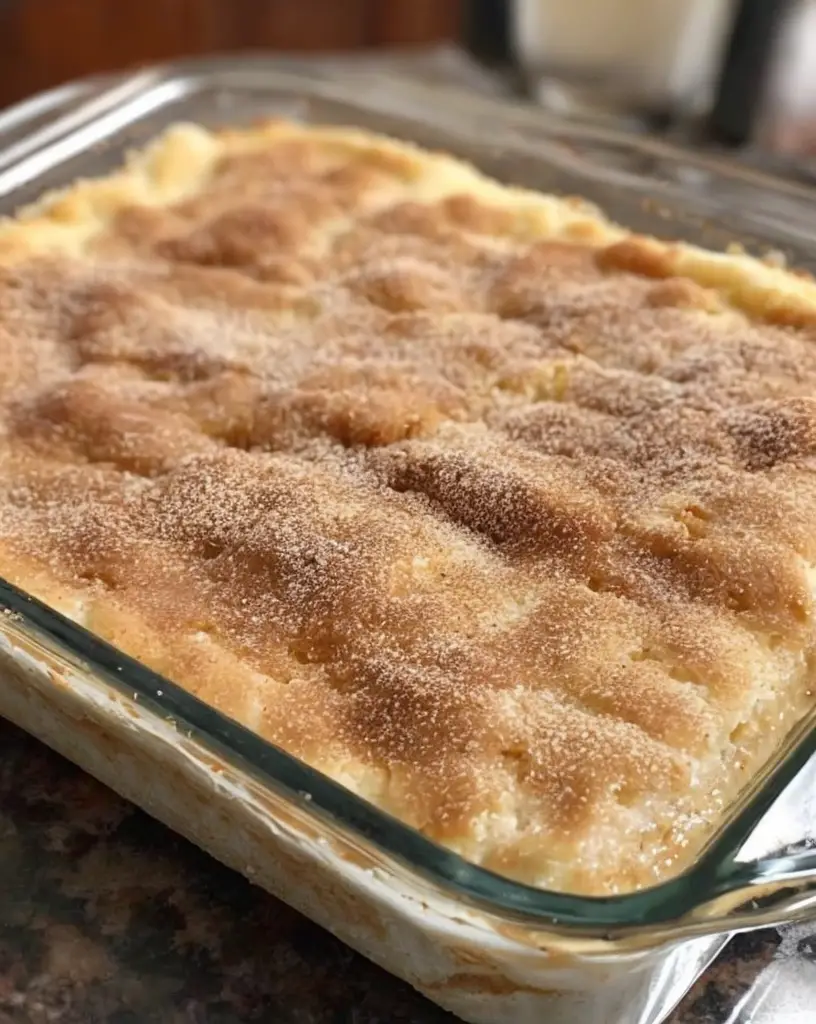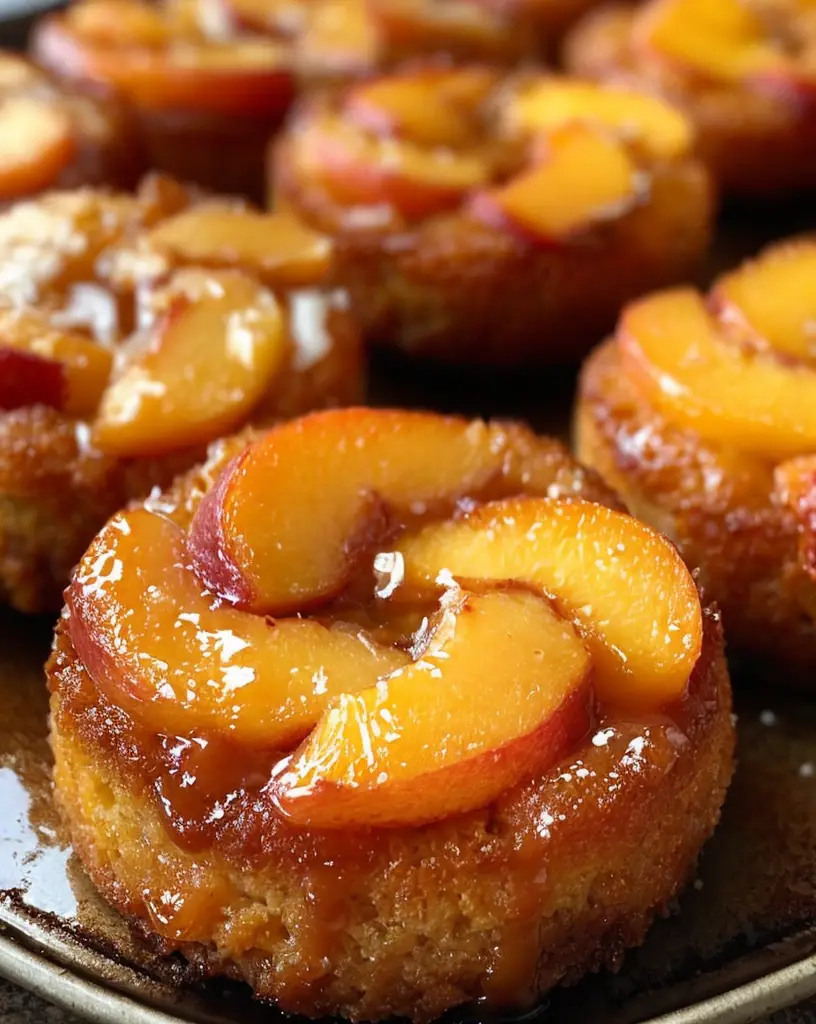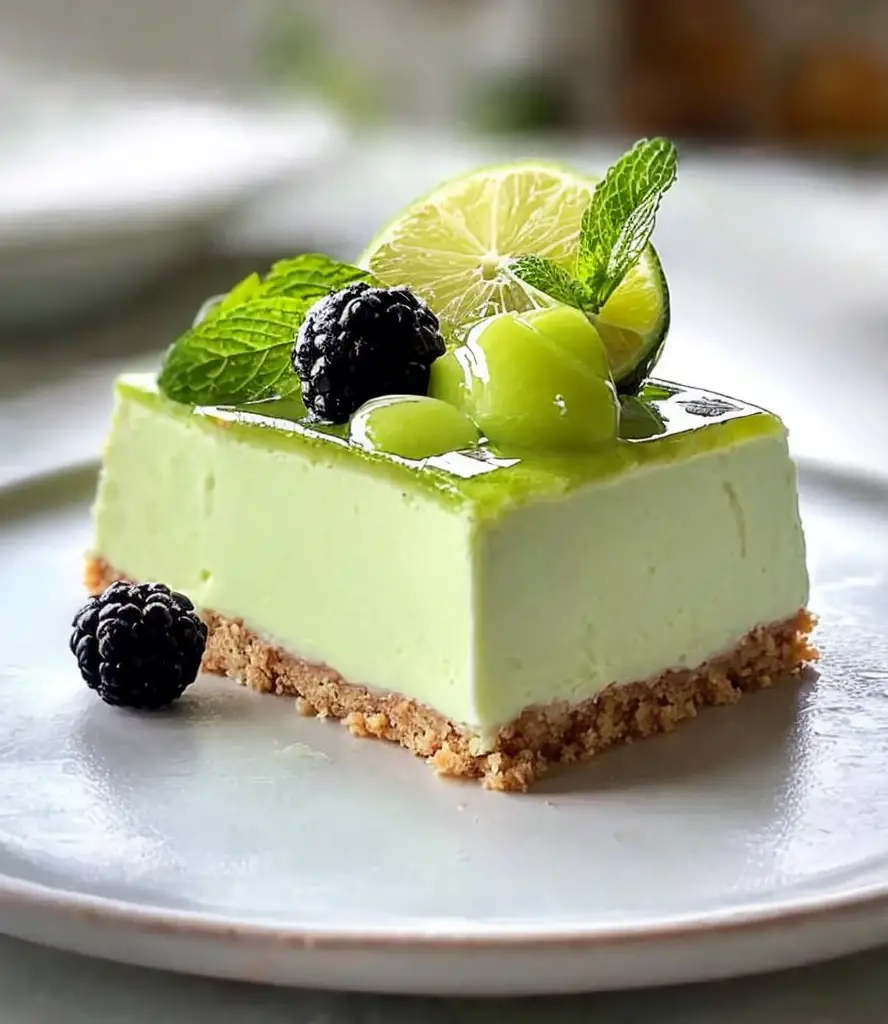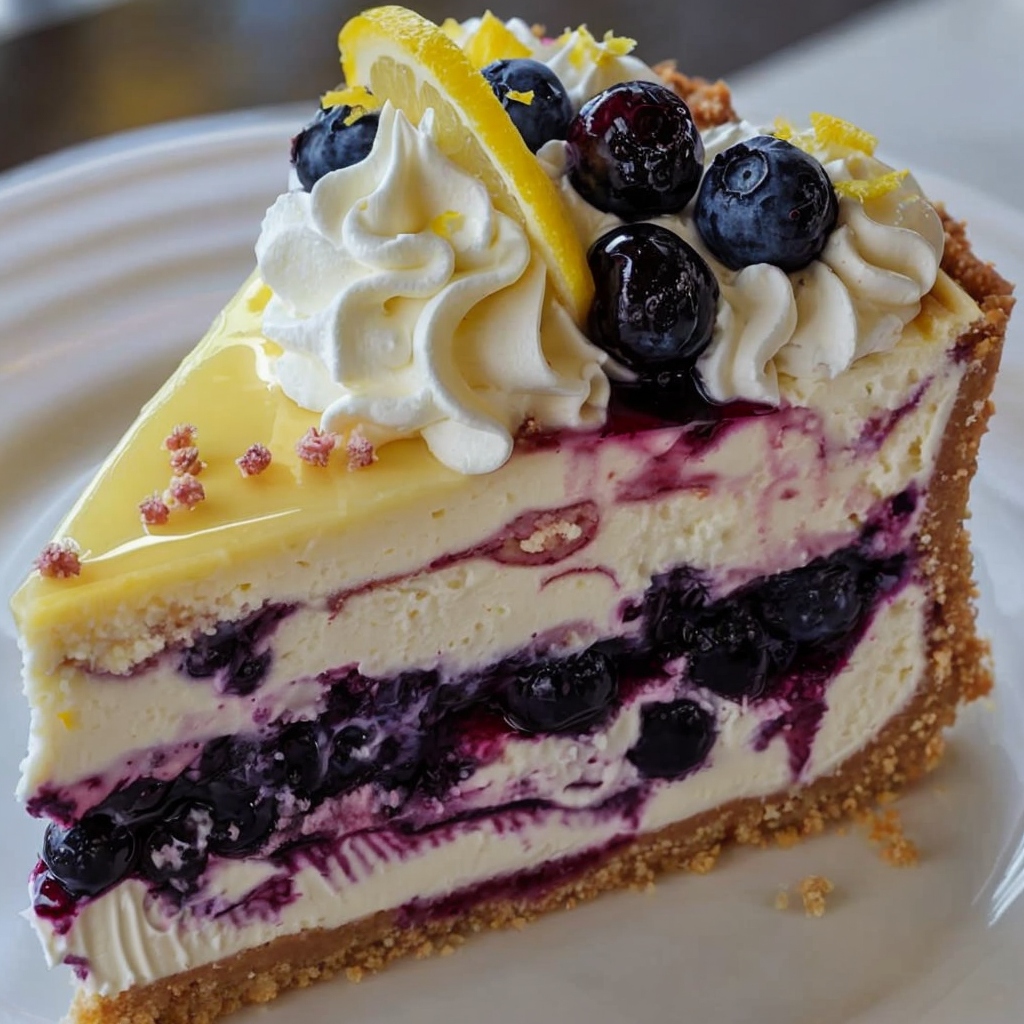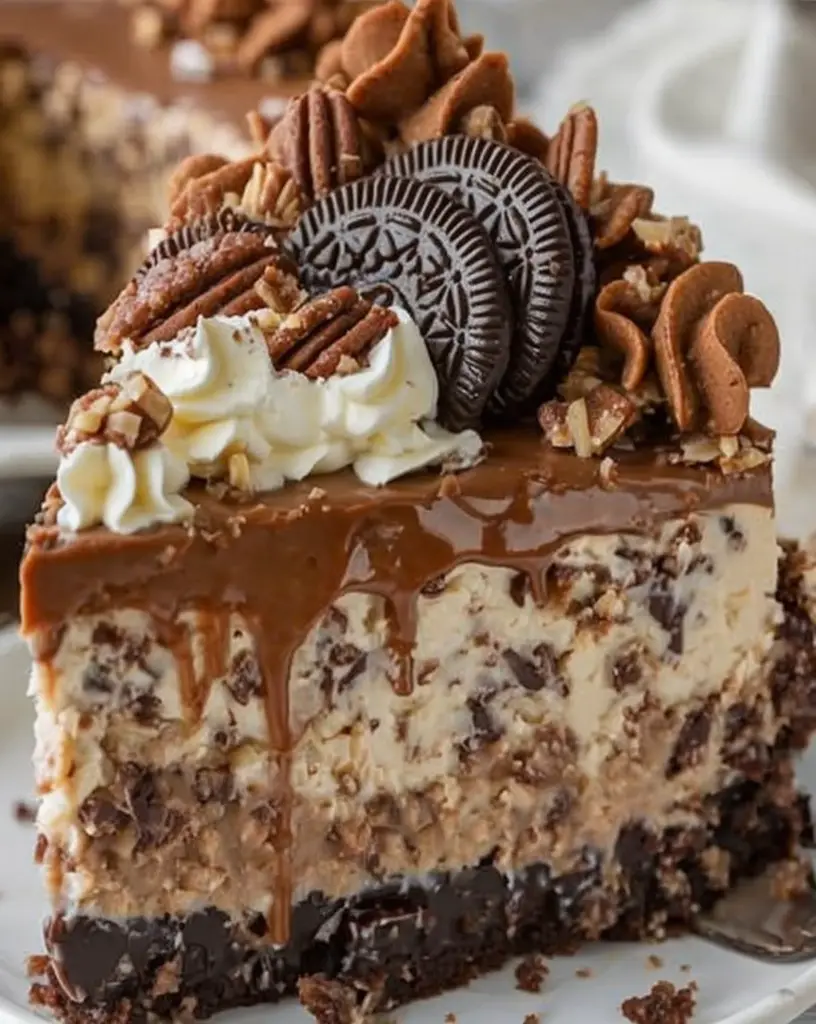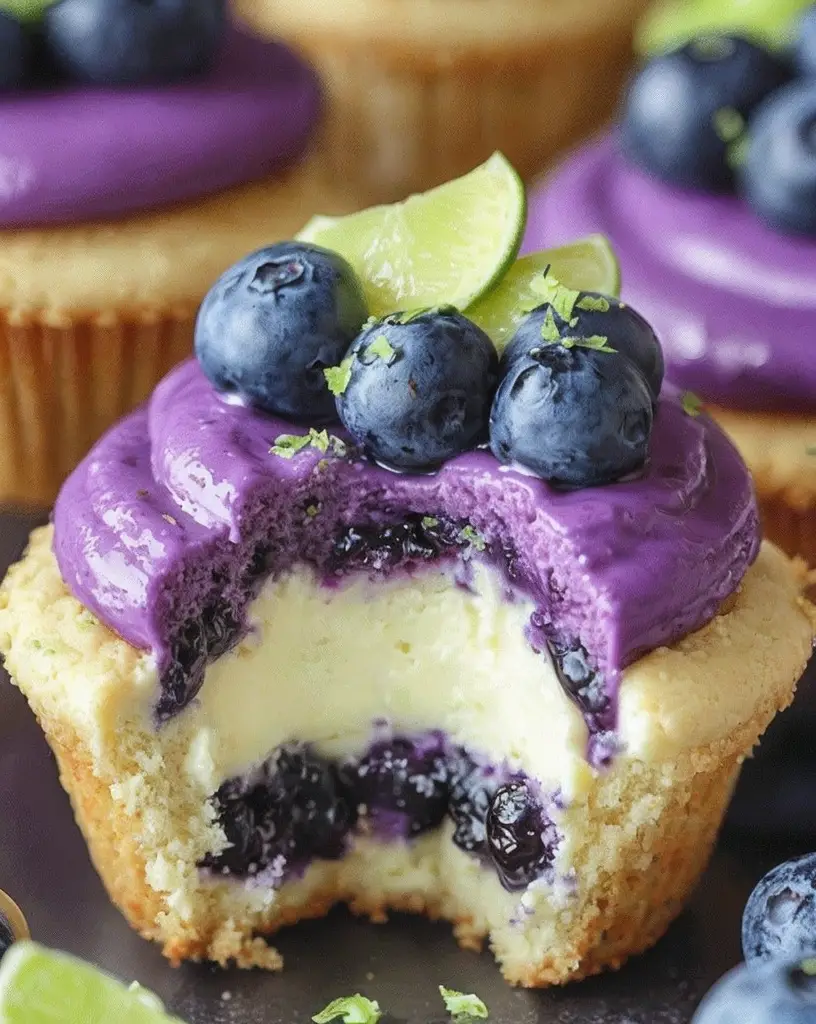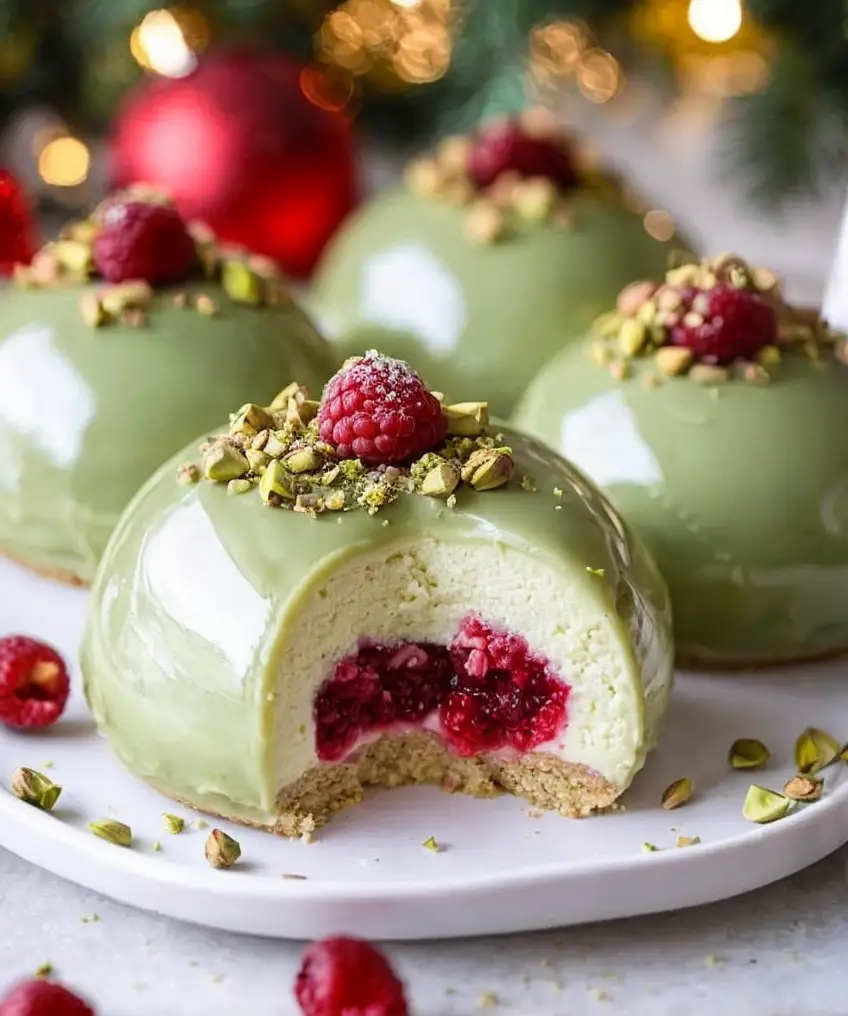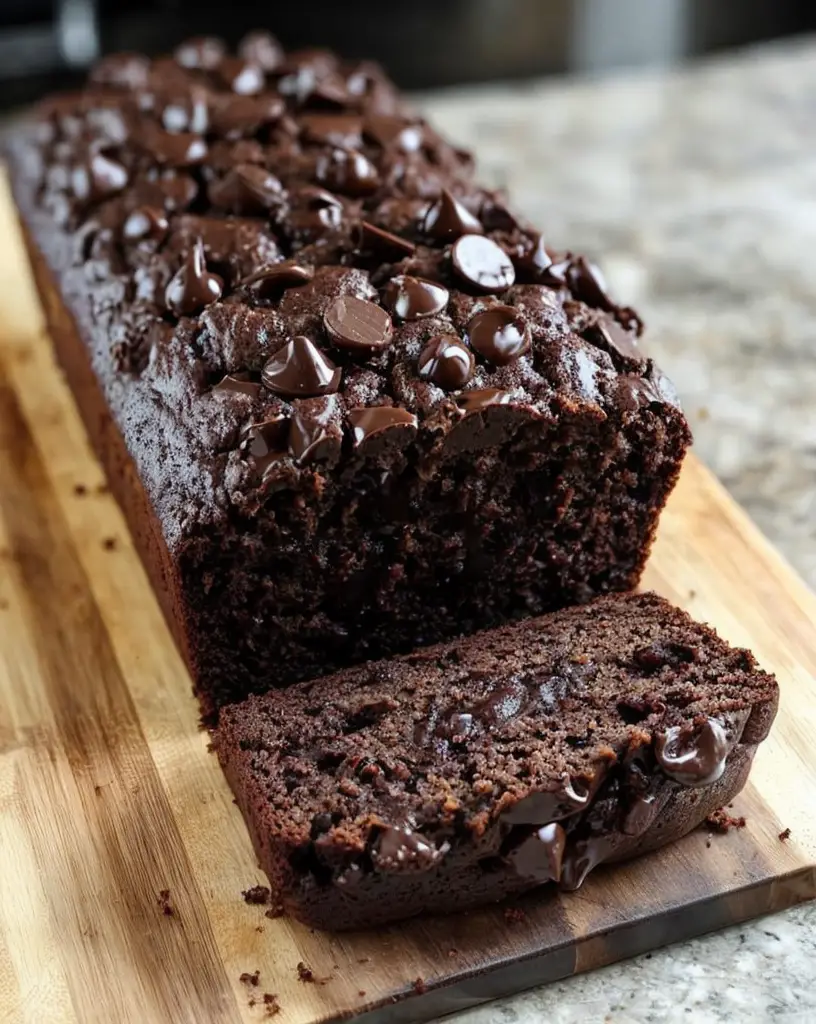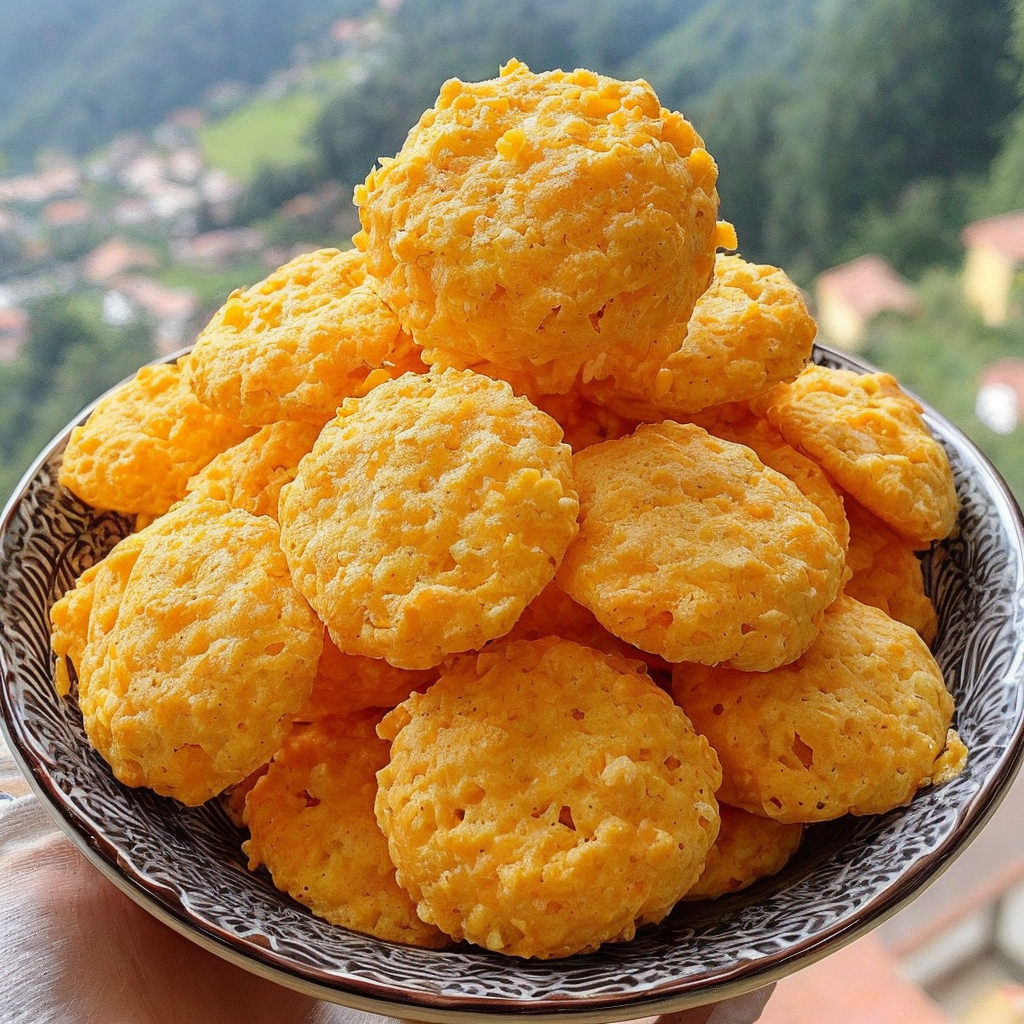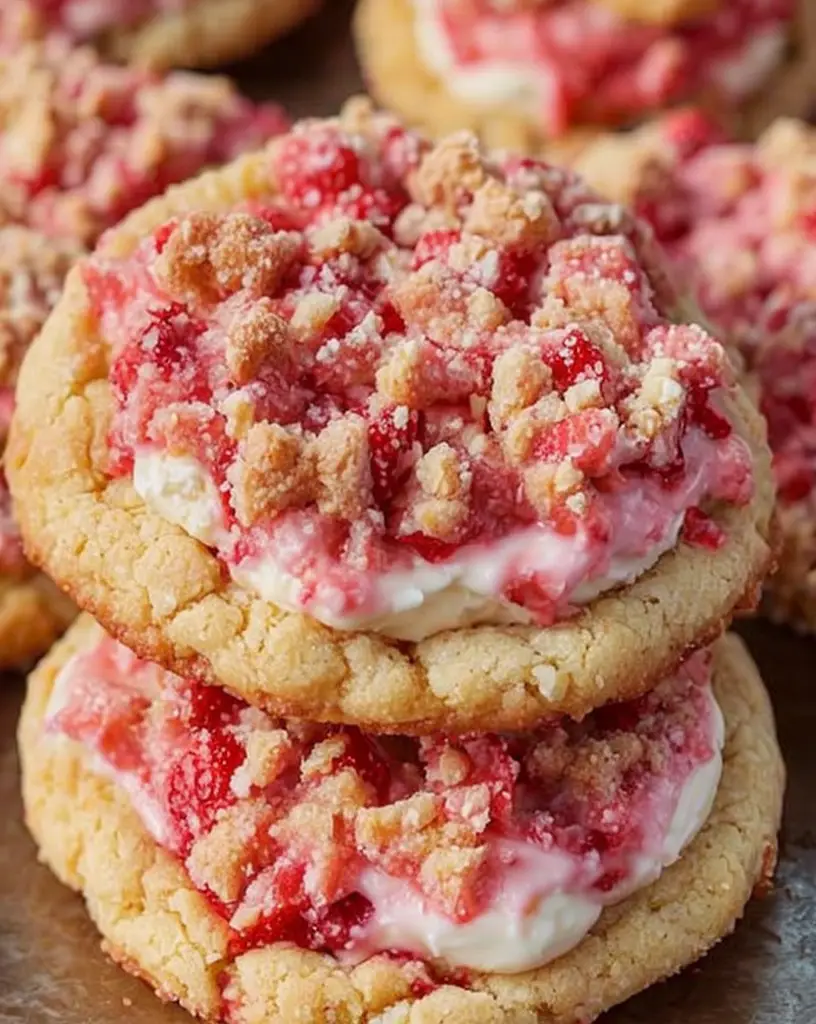Sopapilla Cheesecake Bars: A Sweet Delight with a Twist
Sopapilla Cheesecake Bars are a delightful fusion of traditional Mexican flavors and classic cheesecake goodness. This recipe captures the essence of sopapillas—fluffy, sweet pastries—combined with a creamy cheesecake filling. The experience begins with the warm aroma of vanilla and cinnamon wafting through your kitchen, enticing everyone to gather around. The contrast between the buttery, flaky crust and the rich, velvety filling creates a mouthwatering treat that is perfect for any occasion.
Serving these bars warm is recommended, as the gooey filling oozes slightly when cut, revealing its enticing goodness. Each bite offers a sweet symphony, where velvety cream cheese meets a hint of cinnamon and sugar, leaving a deliciously comforting aftertaste that will have your guests coming back for more. These Sopapilla Cheesecake Bars are not just a dessert; they are a slice of happiness, making them a perfect addition to family gatherings, holidays, or simply as a sweet indulgence after dinner.
Quick Recipe Highlights
- Flavor Profile: A delightful blend of sweet cinnamon and rich cream cheese creates a comforting dessert that feels indulgent yet familiar.
- Texture: The buttery, flaky crust contrasts beautifully with the creamy center, making each bite a perfect balance of texture.
- Aroma: Expect warm notes of cinnamon and sugar that fill your kitchen, inviting everyone to enjoy these bars.
- Visual Appeal: The golden, slightly caramelized top gives way to a creamy filling, making these bars as beautiful as they are delicious.
- Skill Level Needed: This recipe is easy enough for beginners, requiring minimal skills but yielding impressive results.
- Special Equipment: Springform pan or baking dish is ideal for creating the perfect layered structure.
Recipe Overview
- Difficulty Level: This Sopapilla Cheesecake Bars recipe is easy to follow. Even novice bakers can achieve delicious results, making it an accessible choice for anyone looking to sweeten their day.
- Category: These bars are perfect for dessert, snacks, or even as a delightful breakfast treat, showcasing their versatility.
- Cuisine: Inspired by Mexican cuisine, these bars blend traditional flavors with classic dessert elements, making them a unique offering.
- Cost: The ingredients are affordable, making this recipe a budget-friendly choice for gatherings or everyday treats.
- Season: Enjoy these bars year-round, but they’re particularly delightful during the fall and winter months when warm desserts are especially comforting.
- Occasion: Great for festive occasions, family gatherings, or even a simple weeknight dessert, these bars are sure to please!
Why You’ll Love This Recipe
Sopapilla Cheesecake Bars bring together the best of both worlds—the comforting flavor of sopapillas and the creaminess of a cheesecake. The taste is incredibly satisfying; the sweetness is perfectly balanced with the hint of cinnamon, creating an irresistible flavor that will enchant your taste buds. The luxurious texture of the cheesecake filling is complemented by the light, airy crust, making each bite an experience worth savoring.
Convenience plays a key role in this recipe. With just a few simple steps, you can prepare a stunning dessert that requires minimal kitchen time. The ability to serve this dish warm or make it ahead of time adds to its appeal, making it an excellent choice for busy hosts. Whether you’re entertaining guests or treating yourself, these bars deliver with flavor without demanding too much effort.
Additionally, the nutritional aspects of this dessert shouldn’t be overlooked. While it is a treat, it includes cream cheese, which offers some protein and calcium. When prepared thoughtfully, within dietary limits, it can be a satisfying indulgence that doesn’t derail a balanced eating plan.
Socially, these bars can be a centerpiece of conversation around the table. Serving them at parties encourages sharing and connecting, as guests marvel at the delightful combination of textures and flavors. Each bite can spark stories and memories, making them a hit at any gathering.
Finally, these Sopapilla Cheesecake Bars are not only delicious but also cost-effective. Using common pantry ingredients, they are affordable to make, allowing you to create an impressive dessert without breaking the bank. This accessibility makes them an appealing choice for anyone looking to satisfy their sweet tooth.
Historical Background and Cultural Significance
Sopapillas have a rich history rooted in traditional Mexican cuisine, where they have long been enjoyed as a sweet treat. Originating from the Spanish “sopapilla,” these pastries were traditionally fried and served with honey. Over time, these delightful pastries made their way into American dessert culture, particularly in the southwestern United States, giving rise to numerous variations, including this cheesecake bar adaptation.
Culturally, sopapillas hold significance as they embody the warmth and hospitality typical of Mexican gatherings. These treats are often served during festive occasions and celebrations, symbolizing abundance and joy. The evolution of the classic sopapilla into a cheesecake bar reflects the adaptability of traditional recipes to modern tastes and preferences, bridging culinary worlds.
As the recipe for Sopapilla Cheesecake Bars has evolved, it has gained immense popularity among dessert lovers. Families have embraced this sweet treat for its unique flavor and texture while keeping the essence of its sopapilla roots intact. This delicious crossover makes it a standout dessert in modern kitchens.
Regionally, variations of sopapillas can include different fillings or toppings, displaying the diversity of flavors found in Mexican cuisine. As communities adapt recipes to suit local ingredients and tastes, Sopapilla Cheesecake Bars exemplify how culinary traditions can evolve while maintaining a connection to their origins.
Ingredient Deep Dive
- Cream Cheese: A staple in cheesecakes, cream cheese adds richness and depth to Sopapilla Cheesecake Bars. It is on the sweeter side, which balances beautifully with the cinnamon and sugar. Nutritionally, cream cheese provides protein and calcium, making it a satisfying ingredient in desserts. When selecting cream cheese, look for full-fat versions for a creamier texture. For storage, keep it refrigerated and use it before the expiration date; it can also be frozen for longer preservation. If you’re looking for alternatives, Neufchâtel cheese or a dairy-free cream cheese can substitute effectively, but the flavor might slightly differ.
- Sugar: Sugar is essential for sweetness and adds to the overall flavor profile of the bars. Both granulated sugar and powdered sugar play roles in enhancing taste and finish. Nutritionally, sugar should be consumed in moderation, but it does provide quick energy. When selecting sugar, opt for organic options if possible, as they are less processed. Store sugar in a cool, dry place. Substitutes like honey or maple syrup can alter the flavor profile but can be used to reduce refined sugar intake.
- Butter: Butter serves as a key component in the crust, giving it a rich flavor and flaky texture. The use of unsalted butter is recommended to better control the overall saltiness in the recipe. Butter also contributes important fat-soluble vitamins, but it’s important to moderate intake due to its saturated fat content. Look for high-quality, grass-fed butter for the best flavor and health benefits. Store it in the refrigerator or freezer, and remember that it can be easily substituted with margarine or a plant-based alternative if needed.
- Cinnamon: A warm spice that adds depth and complexity to the flavor of Sopapilla Cheesecake Bars, cinnamon is rich in antioxidants and has anti-inflammatory properties. When purchasing cinnamon, choose Ceylon or true cinnamon for superior flavor and health benefits. Store it in a cool, dark place to preserve its freshness. If you’re seeking flavor variations, consider using nutmeg or pumpkin spice as alternatives to the traditional cinnamon flavor profile.
- Vanilla Extract: The aromatic addition of vanilla elevates the dessert, rounding out the flavor experience. It provides a sweet and warm essence, making it a staple in many dessert recipes. When selecting vanilla extract, opt for pure vanilla rather than imitation for better taste. It can be stored in a pantry but should be kept away from light to maintain its quality. For variations, consider almond extract to impart a unique flavor twist.
Common Mistakes to Avoid
- Not softening cream cheese: Always allow cream cheese to come to room temperature before mixing. This ensures a smoother texture and avoids lumps in the filling.
- Overmixing: When combining ingredients, mix just until combined to avoid a tough texture. Overmixing can incorporate too much air, leading to cracks when baked.
- Skipping flour: Use flour in the crust preparation to create structure and prevent excess greasiness. Not using flour can result in a soggy base.
- Not preheating the oven: Make sure the oven is preheated to the appropriate temperature. Baking in a too-cold oven can lead to uneven cooking.
- Cutting too soon: Allow the bars to cool completely before slicing. Slicing while they’re warm can cause the filling to spill out and ruin the presentation.
- Using too much sugar: While sweetness is key, too much sugar can overpower the other flavors and affect the texture. Measure carefully!
- Covering while cooling: Avoid covering the bars while they cool, as it can trap steam and make the crust soggy.
- Not adjusting oven racks: Ensure that your baking pan is in the center of the oven to allow even cooking and browning.
- Skipping the garnish: A sprinkle of powdered sugar or cinnamon on top adds a lovely finishing touch—don’t skip this simple step for enhanced appeal!
- Using metal pans without adjustments: If using metal pans, reduce the cooking time slightly, as they conduct heat better than glass or ceramic.
Essential Techniques
Creaming: This technique is crucial for achieving a smooth, fluffy cream cheese filling. Start by beating softened butter and sugar together until light and fluffy. This traps air and creates a lighter texture in your final bars. Be mindful not to overmix, as this can lead to a denser texture. Look for a creamy consistency with no lumps for best results.
Layering: Layering ingredients properly is essential for the structure of Sopapilla Cheesecake Bars. Start by pressing the dough into the bottom of the pan evenly, ensuring the base supports the filling without sinking. Next, spread the cream cheese filling gently to avoid disturbing the crust. Observing these layers will contribute to a beautiful final product.
Baking: Baking at the correct temperature is vital. Ensure your oven is preheated, and use the middle rack to allow even heat distribution. Watch for visual cues; the edges should be golden brown, and the center should be slightly set but still soft for that creamy texture. Overbaking can lead to dry bars, so check a few minutes early!
Cooling: Cooling the bars at room temperature before refrigerating allows the flavors to meld and the texture to stabilize. This prevents condensation that can ruin the crust. Allowing them to cool completely makes slicing easier and keeps the layers intact, so be patient!
Pro Tips for Perfect Sopapilla Cheesecake Bars
1. Use room temperature ingredients: Let your cream cheese, eggs, and butter come to room temperature before mixing. This helps achieve a smoother texture and better consistency in your bars.
2. Don’t overbake: Keep an eye during the last few minutes of baking. The cheesecake should be set but still slightly jiggle in the center for the perfect creamy texture.
3. Incorporate flavor variations: Add lemon zest for a hint of brightness or a dash of espresso powder for a coffee-infused twist.
4. Experiment with toppings: Top with fresh berries, whipped cream, or a drizzle of honey for added flavor and aesthetic appeal.
5. Use quality ingredients: Opt for high-quality cream cheese and butter for a richer taste and creamy texture.
6. Make it in advance: These bars can be prepared a day ahead; they actually taste better after chilling overnight, allowing the flavors to meld.
7. Ensure even slicing: Use a sharp, hot knife for cutting the bars into even pieces, mirroring the bars’ beautiful layered structure.
8. Store properly: Wrap the remaining bars tightly in plastic wrap before refrigerating to maintain freshness and flavor.
Variations and Adaptations
For seasonal variations, consider incorporating pumpkin puree into the cheesecake filling for a fall twist or fresh strawberries in the summer. These fruit additions not only offer vibrant color but also enhance the flavor profile of the bars.
For dietary modifications, consider creating gluten-free crust using almond flour or gluten-free flour mixtures. Substituting dairy-free cream cheese allows for a completely dairy-free dessert option without sacrificing flavor.
If you’re looking to experiment with flavor variations, add a hint of coconut extract or pecans to the crust for an extra layer of deliciousness. Adjusting the sugar levels can help cater to lower-calorie needs while still delivering on taste.
For texture modifications, consider adding a layer of chocolate ganache or a nuts topping to amplify the dessert’s richness. Each of these adaptations can create a unique experience while honoring the core of Sopapilla Cheesecake Bars.
Serving and Presentation Guide
When plating your Sopapilla Cheesecake Bars, ensure that they are beautifully arranged on a serving dish, perhaps garnished with a dusting of powdered sugar and fresh mint leaves for a pop of color. This elevates the visual appeal and entices guests even more.
Garnishing with a drizzle of caramel or chocolate sauce can enhance both flavor and presentation. Consider serving alongside a scoop of vanilla ice cream to complement the sweetness and richness of the bars.
Temperature considerations are also key; serve these bars lukewarm or at room temperature to maximize the creamy texture and flavor. When portioning, aim for uniformity to provide a pleasing aesthetic and ensure everyone gets a fair share of this delicious dessert.
Wine and Beverage Pairing
A light, sweet Riesling or a Moscato makes an excellent pairing with Sopapilla Cheesecake Bars, enhancing their creamy sweetness. Alternatively, a rich coffee, such as a dark roast or espresso, complements the dessert’s flavors beautifully.
If you’re seeking non-alcoholic options, consider a refreshing iced tea with hints of lemon or a cinnamon-infused apple cider that echoes the spices of the bars. These beverage pairings can elevate the overall dining experience and create memorable moments.
Storage and Shelf Life
Store Sopapilla Cheesecake Bars in an airtight container in your refrigerator. They will maintain their best flavor and texture for about 5 days. A layer of plastic wrap can also help to keep them fresher for longer.
If you want to store them for an extended period, freezing is an option. Wrap the bars tightly in plastic wrap followed by aluminum foil, and they can be kept in the freezer for up to 3 months. Thaw them in the refrigerator before serving to maintain the best quality.
Observe signs of spoilage, such as unusual odors or discoloration, which indicate it’s time to dispose of your bars. Additionally, when reheating, do so gently in the microwave or oven to avoid drying them out.
Make Ahead Strategies
You can efficiently prepare Sopapilla Cheesecake Bars in advance by making the crust and filling a day prior. Store each component separately in the refrigerator until you’re ready to assemble and bake.
Between steps, allow any cooled elements to stay covered to maintain freshness, ensuring optimal flavor when you’re ready to combine and bake. Post-baking, let them cool completely before refrigerating for improved texture when served.
When reheating, consider adding fresh elements, such as whipped cream or fruits, to enhance flavor and presentation, ensuring the bars taste freshly made even after a few days.
Scaling Instructions
To halve the Sopapilla Cheesecake Bars recipe, simply divide each ingredient by two while maintaining the baking time. This adjustment works well for smaller gatherings or if you want to try different variations without excess leftovers.
If doubling or tripling the recipe, be prepared for a bit longer cooking time. Ensure you adjust the pan size accordingly; larger baking dishes often require a longer bake time, while smaller pans may call for reduced time. Keep an eye out for visual cues to ensure perfectly baked bars!
When scaling, remember to use accordingly sized kitchen equipment, such as larger mixing bowls or pans, to accommodate the increased volume of ingredients, ensuring even mixing and baking.
Nutritional Deep Dive
These bars typically break down macronutrients into 23g of carbohydrates, 8g of fat, and 4g of protein per serving. This substantial carbohydrate content is due to the sugar and crust, providing quick energy while still being manageable in moderation.
Micronutrient-wise, the bars can offer calcium from cream cheese and potassium from added fruits. They can fit into various dietary considerations, allowing room for indulgence as a treat rather than a daily staple.
With the right portion analysis, Sopapilla Cheesecake Bars can be a part of a balanced diet. Moderation is key to enjoying these rich bars while keeping your nutritional goals in mind. For those mindful of their intake, this dessert can make an enjoyable occasional treat.
Dietary Adaptations
For gluten-free variations, substitute all-purpose flour in the crust with a gluten-free blend. Numerous products on the market are formulated specifically for baking, allowing you to achieve a similar texture.
If you’re aiming for a dairy-free option, use a blend of dairy-free cream cheese and coconut milk for the filling. These substitutions still yield delicious results while catering to dietary restrictions.
To make these bars vegan, replace eggs with flaxseed meal or applesauce as a binding agent and ensure all other ingredients are plant-based. Both adaptations keep the rich flavor intact while accommodating those with specific dietary needs.
Troubleshooting Guide
Texture issues often arise when the cream cheese is not properly softened. Ensure it has reached room temperature before mixing. If the bars turn out too wet, ensure they are adequately cooled in the refrigerator before serving.
Flavor balance can be a concern, particularly with too much cinnamon or sugar. Allow the ingredients to blend harmoniously during mixing; if noticed afterward, adjust with a pinch of salt to round out the flavor.
Temperature problems during baking can lead to uneven results. Make sure your oven is properly calibrated—if baked too hot or not hot enough, adjust oven settings accordingly for future batches.
If using substitutions, keep an eye on moisture content; different ingredients can lead to variations in hydration, which can affect the final bars. Experiment and document adjustments for future trials.
Recipe Success Stories
Readers often share their excitement about how this recipe has become a family favorite. Many appreciate how easy it is to customize to personal taste, adding their unique twists to the classic preparation.
Adaptations have led to successful variations, from adding fruit fillings to experimenting with different flavored fillings, creating unique treats that have delighted friends and family alike. Posts often highlight photos showcasing these beautiful desserts, making them visually appealing.
Suggestions from readers frequently include tips to make the bars even easier, such as using parchment paper to line the baking pan for easier removal. These insights bring the community together, fostering creativity in the kitchen.
Frequently Asked Questions
Can I freeze Sopapilla Cheesecake Bars? Yes, you can freeze them once completely cooled. Wrap tightly in plastic wrap and aluminum foil and freeze for up to 3 months.
How long do leftovers last in the fridge? Leftover bars can be stored in the refrigerator for up to 5 days in an airtight container.
Can I use low-fat cream cheese? Yes, but keep in mind that using low-fat cream cheese may alter the texture slightly, making it less creamy.
What can I serve alongside these bars? They are delicious on their own, but you can serve them with whipped cream, fresh fruits, or a drizzle of chocolate sauce for added taste.
Can I make the filling ahead of time? Yes, you can prepare the filling a day ahead. Just store it in the refrigerator until you’re ready to use it.
Is it necessary to use vanilla extract? While it’s not strictly necessary, vanilla adds depth of flavor that enhances the overall taste of the bars.
What should I do if the crust is too crumbly? If your crust crumbles, try adding a tablespoon of water or milk to help bind it together better.
Can I double the recipe without adjustments? Yes, you can double the recipe; just be mindful of baking time, as it may take a bit longer.
Are these bars suitable for parties? Absolutely! They are a crowd-pleaser and easy to cut into individual servings, making them perfect for gatherings.
What is the best way to cut these bars? Use a sharp knife and wipe it clean between cuts for clean edges and a tidy presentation.
Additional Resources
Explore other delectable dessert recipes to complement your baking repertoire. From traditional Mexican desserts to contemporary takes on classic sweets, there’s a treasure trove of recipes to try.
Check out technique guides which cover the essential skills needed for successful baking, such as mixing methods and understanding ingredient interactions. Understanding these techniques can elevate future baking endeavors.
Further ingredient information can help you connect with the flavors and nutritional profiles of what you cook, enabling thoughtful substitutions to cater to dietary preferences.
Join the Conversation
We encourage readers to share their experiences, adaptations, and reviews to foster a vibrant cooking community. Engage with us on social media platforms to showcase your beautiful Sopapilla Cheesecake Bars and discuss photos, tips, and tricks.
Don’t forget to leave your feedback and suggestions below! We love hearing your success stories and any variations you’ve created, as well as your photography tips to capture these beautiful treats in all their glory. Join us in celebrating the joy of cooking through this delightful dessert!
The Recipe
Sopapilla Cheesecake Bars
Serves: 12 Bars
Prep Time: 15 mins
Cook Time: 30 mins
Total Time: 45 mins
Kitchen Equipment Needed
- 9×13 inch baking dish
- Mixing bowls
- Electric mixer
- Spoon or spatula
- Measuring cups and spoons
- Whisk
Ingredients
- 2 cans of crescent roll dough
- 2 packages (8 oz each) cream cheese, softened
- 1 cup granulated sugar
- 1 teaspoon vanilla extract
- 1 teaspoon ground cinnamon
- ½ cup unsalted butter, melted
- 1 cup powdered sugar (for dusting)
Directions
- Preheat the oven to 350°F (175°C).
- In a mixing bowl, blend together the softened cream cheese, sugar, vanilla extract, and cinnamon until smooth.
- Roll out one can of crescent roll dough in the bottom of a greased 9×13 inch baking dish.
- Spread the cream cheese mixture over the dough evenly.
- Roll out the second can of crescent roll dough and lay it over the cream cheese filling.
- Brush the melted butter over the top, and sprinkle with cinnamon and sugar.
- Bake in the preheated oven for 25-30 minutes or until golden brown.
- Allow to cool before slicing into bars and dust with powdered sugar before serving.
Recipe Notes
- Feel free to adjust sweetness by modifying the sugar measurements to your taste.
- Add a layer of chocolate or fruit for added flavor variations.
- Store bars in the refrigerator for optimal freshness.
